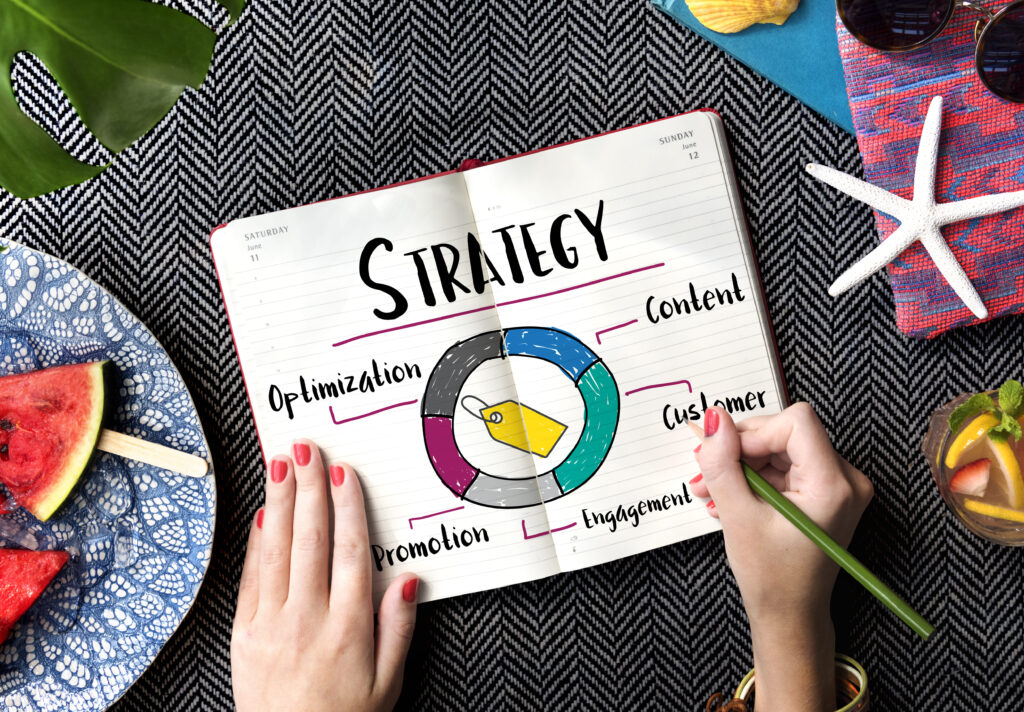Top Product Marketing Interview Questions & Answers

Preparing for a Product Marketing Interview requires thorough understanding of the role's requirements and expectations. Typically, interviews for product marketing managers focus on assessing candidates' strategic thinking, market knowledge, collaboration skills, and ability to drive successful product launches. Interviewers often inquire about candidates' experience in developing go-to-market strategies, launching new products, and collaborating with cross-functional teams. They may also ask about handling competitive landscapes, customer insights, and crisis management scenarios. Candidates should be ready to discuss specific examples demonstrating their ability to influence stakeholders, adapt to market trends, and utilize data-driven insights to achieve marketing objectives.
Looking for specialised interview questions?
1. Can you describe your approach to developing a product marketing strategy from inception to execution?
Developing a product marketing strategy begins with a deep understanding of the product, market, and target audience. For example, when launching a new mobile app, I conducted market research to identify user needs and competitive insights. Based on this research, I defined the target audience, crafted a unique value proposition, and developed messaging that resonated with our users. Collaborating with cross-functional teams, we created a comprehensive go-to-market plan that included pricing, distribution channels, promotional tactics, and metrics for success. Continuous monitoring and iteration ensured the strategy adapted to market dynamics and achieved our objectives.
2. How do you conduct market research to identify customer needs and preferences?
Conducting market research involves gathering qualitative and quantitative data to understand customer needs, behaviors, and preferences. For instance, when launching a new SaaS platform, we conducted surveys, focus groups, and competitor analysis to gather insights. These efforts revealed pain points such as integration challenges and pricing sensitivity, guiding us in developing features and pricing models that addressed customer priorities. By listening to the voice of the customer, we ensured our product resonated with the market and fulfilled genuine needs.
3. Prepare for Product Marketing Interview Questions: Key Considerations for Showcasing Product Positioning Strategies
A successful product positioning strategy involves identifying a unique market position that differentiates the product from competitors and resonates with target customers. For example, when positioning a premium coffee brand, we emphasized its organic sourcing, sustainable practices, and unique flavor profiles. Factors considered included market segmentation, competitor analysis, and consumer preferences for ethical sourcing and quality. By highlighting these attributes through storytelling and visual branding, we positioned the product as a premium choice for environmentally conscious consumers, leading to increased market share and brand loyalty.
4. How do you prioritize features and benefits to emphasize in marketing campaigns?
Prioritizing features and benefits involves aligning them with customer needs and market trends. For example, when marketing a new smartphone, we prioritized features such as camera quality, battery life, and user interface based on consumer insights and competitive benchmarking. Emphasizing these benefits through demonstrations, user testimonials, and comparison charts highlighted the product’s value proposition and competitive advantages. By focusing on features that resonated most with our target audience, we effectively communicated the product’s benefits and drove purchasing decisions.
5. How do you integrate customer feedback into product marketing strategies?

Integrating customer feedback is crucial for refining product marketing strategies and enhancing customer satisfaction. For instance, after launching a fitness app, we collected user feedback through app reviews, surveys, and customer support interactions. Analyzing this feedback identified usability issues and feature requests, which informed product updates and marketing communications. By addressing user concerns and highlighting new features in marketing campaigns, we demonstrated responsiveness to customer needs and improved overall user experience, leading to higher retention rates and positive brand perception.
6. Can you describe your experience with creating and executing go-to-market plans?
Creating a go-to-market (GTM) plan involves aligning product launch strategies with business objectives to maximize market penetration and customer acquisition. For example, when launching a new software solution, I developed a GTM plan that included market segmentation, pricing strategy, distribution channels, promotional activities, and sales enablement. Collaboration with sales, marketing, product development, and customer support teams ensured alignment and execution of the plan. By monitoring key performance indicators (KPIs) such as customer acquisition costs (CAC) and conversion rates, we evaluated the plan’s effectiveness and made iterative improvements to drive growth and profitability.
7. How do you approach competitive analysis in product marketing?
Competitive analysis involves evaluating competitors’ strengths, weaknesses, and market positioning to identify opportunities and threats. For instance, when analyzing a new entrant in the fashion industry, we assessed their pricing strategies, product offerings, and marketing tactics through market research and industry reports. This analysis informed our differentiation strategy, allowing us to highlight unique value propositions such as quality craftsmanship and sustainable materials. By monitoring competitors’ moves and adjusting our marketing strategies accordingly, we maintained a competitive edge and captured market share effectively.
8. Describe a time when you successfully launched a product in a saturated market. How did you differentiate your product?
Launching a product in a saturated market requires differentiation through unique value propositions and targeted positioning. For example, when introducing a new energy drink, we differentiated our product by emphasizing natural ingredients, health benefits, and innovative packaging. Market research identified consumer preferences for healthier alternatives and convenience, guiding our product development and marketing strategies. By leveraging these insights and communicating our product’s distinct advantages, we effectively penetrated the competitive market and gained traction among health-conscious consumers.
9. How do you measure the effectiveness of marketing campaigns? Can you provide an example?
Measuring marketing campaign effectiveness involves tracking KPIs such as conversion rates, ROI, customer acquisition costs (CAC), and brand awareness metrics. For instance, when launching a digital advertising campaign for a fashion brand, we monitored metrics including click-through rates (CTR), conversion rates (CVR), and average order value (AOV). By analyzing these metrics in relation to campaign objectives and budget allocation, we assessed performance, optimized ad creatives and targeting, and achieved a significant increase in online sales and brand engagement.
10. How do you adapt marketing strategies to changing market conditions or consumer trends?
Adapting marketing strategies requires agility and responsiveness to evolving market dynamics and consumer behaviors. For example, during a global health crisis, we adjusted our marketing strategies for a travel booking platform by promoting flexible cancellation policies and domestic travel destinations. This adaptation addressed changing consumer priorities and travel restrictions, maintaining customer trust and engagement. By monitoring market trends, customer feedback, and competitor strategies, we made data-driven adjustments to our marketing campaigns and effectively navigated through uncertain times.
11. How do you ensure consistency in brand messaging across various marketing channels?
Consistency in brand messaging involves aligning communication strategies and visual identity across all marketing channels to reinforce brand values and resonate with target audiences. For example, when managing a brand’s social media presence, I ensured that posts, captions, and visuals maintained a cohesive tone and reflected the brand’s personality and values. By using brand guidelines, content calendars, and cross-functional collaboration, we maintained consistency in messaging while adapting content to suit platform-specific formats and audience preferences.
12. Describe your experience in leveraging digital marketing strategies for product promotion. What channels do you find most effective?
Leveraging digital marketing strategies involves utilizing online platforms and tools to reach target audiences, drive engagement, and achieve marketing objectives. For instance, when promoting a new e-commerce platform, I implemented digital marketing campaigns across channels such as search engine optimization (SEO), paid advertising (PPC), email marketing, and social media. Each channel served specific purposes: SEO improved organic visibility, PPC campaigns targeted high-intent users, email marketing nurtured leads, and social media engaged with audiences through interactive content and community building. By analyzing campaign performance metrics and optimizing strategies based on data insights, we maximized ROI and effectively promoted the platform to generate sales and brand awareness.
13. How do you approach influencer marketing to enhance product visibility and credibility?
Influencer marketing involves collaborating with individuals who have a significant following and influence within specific target demographics to endorse products and amplify brand messaging. For example, when launching a beauty brand, I identified influencers whose values aligned with our brand ethos and target audience preferences. Through partnerships and sponsored collaborations, influencers created authentic content that showcased product benefits and usage, reaching their loyal followers and driving engagement. By measuring metrics such as reach, engagement rates, and influencer-generated content performance, we evaluated campaign effectiveness and leveraged influencer relationships to build brand credibility and expand market reach.
14. How do you handle the integration of customer insights into product development processes?
Integrating customer insights into product development involves gathering feedback, analyzing data, and collaborating with cross-functional teams to inform product enhancements and innovations. For example, after launching a mobile banking app, we conducted user surveys and usability testing to identify pain points and feature requests. Working closely with product managers and developers, we prioritized updates that addressed user needs, improved functionality, and enhanced overall user experience. By iterating based on customer feedback and leveraging agile development methodologies, we ensured that product updates aligned with market demands and customer expectations, driving adoption and retention.
15. How do you collaborate with sales teams to align marketing efforts and drive revenue growth?
Collaborating with sales teams involves aligning marketing strategies and initiatives to support sales objectives, drive lead generation, and maximize revenue growth. For example, when launching a B2B software solution, I collaborated closely with sales teams to develop targeted campaigns, create sales enablement tools, and define customer personas. By providing sales teams with qualified leads, customer insights, and marketing collateral tailored to buyer needs, we facilitated effective prospecting and accelerated sales cycles. Regular communication, feedback loops, and performance tracking enabled us to optimize marketing and sales alignment, achieve shared goals, and drive sustainable business growth.
Product Marketing Technical Questions
16. Explain how you conduct a SWOT analysis for a product.
A SWOT analysis evaluates a product’s Strengths, Weaknesses, Opportunities, and Threats. For instance, while launching a new software tool, I identified its strength as a unique user-friendly interface (Strength), noted the lack of brand recognition as a weakness (Weakness), saw market expansion as an opportunity (Opportunity), and identified established competitors as a threat (Threat). This analysis helped prioritize marketing strategies and allocate resources effectively.

17. How do you determine the target audience for a new product?
To determine the target audience, I use demographic, psychographic, and behavioral segmentation. For example, while marketing a fitness app, I identified young professionals aged 25-40 interested in health and technology. Surveys, user feedback, and market research tools like Google Analytics helped refine this audience profile, ensuring marketing efforts were directed at the most receptive users.
18. Describe the steps involved in creating a go-to-market (GTM) strategy.
A GTM strategy includes market research, defining the target audience, crafting a value proposition, positioning the product, selecting marketing channels, and setting metrics for success. For a new SaaS product, I started with comprehensive market research, identified SMBs as the target audience, crafted a unique value proposition highlighting ease of use, positioned it as a cost-effective solution, chose digital marketing channels, and set KPIs like user acquisition rates.
19. What metrics do you use to measure the success of a product marketing campaign?
Key metrics include customer acquisition cost (CAC), customer lifetime value (CLV), conversion rates, and return on investment (ROI). For example, in a recent campaign, we measured CAC by dividing total campaign costs by the number of new customers acquired, ensuring our strategies were cost-effective. Monitoring conversion rates from various channels helped optimize our marketing mix. You can also enroll in the Product Marketing course to gain a deeper understanding of these essential metrics and strategies.”
20. How do you handle a product that is underperforming in the market?
First, I analyze performance data to identify issues, then gather customer feedback to understand pain points. For instance, an underperforming mobile app was re-evaluated based on user reviews, and found that usability issues were causing low retention. We then prioritized updates to enhance the user interface and rolled out targeted campaigns to re-engage users, improving performance metrics over time.
21. Explain how you would develop a positioning statement for a new product.
A positioning statement clearly defines the product, its target audience, and unique value proposition. For example, for an eco-friendly water bottle, the positioning statement was: “For environmentally-conscious consumers who seek sustainable alternatives, our water bottle offers durability and a sleek design made from 100% recycled materials, unlike traditional plastic bottles.”
22. How do you ensure alignment between product marketing and sales teams?
Regular communication and collaboration are key. I establish joint meetings to discuss goals, share insights, and align on messaging. For instance, during a product launch, weekly sync-ups with the sales team ensured they were well-informed about the product features, benefits, and target audience, leading to a cohesive go-to-market approach.
23. Describe a successful product launch you’ve managed.
For a new mobile app, the launch strategy included pre-launch teasers, influencer partnerships, and a targeted social media campaign. We generated buzz with a countdown, collaborated with influencers for early reviews, and engaged users through interactive content. Post-launch, we saw a 50% increase in downloads compared to projections, and user feedback highlighted our comprehensive marketing approach. If you’re interested in exploring a career path in product marketing, understanding these strategies can be essential
24. How do you gather and utilize customer feedback for product improvement?
I use surveys, user interviews, and analytics tools to gather feedback. For example, after launching a new feature in a software product, we conducted user surveys and monitored usage patterns. The feedback indicated a need for better tutorials, which led us to create detailed guides and in-app help tips, improving user satisfaction and engagement.
25. Explain the role of competitive analysis in product marketing.
Competitive analysis helps identify market gaps and differentiate our product. For instance, while marketing a new CRM tool, I analyzed competitors’ offerings, strengths, and weaknesses. This analysis revealed opportunities to highlight our superior customer support and integration capabilities, which we emphasized in our marketing campaigns, positioning us favorably in the market.
26. How do you leverage digital marketing channels for product promotion?
I use a mix of SEO, PPC, social media, email marketing, and content marketing. For a recent e-commerce product, we optimized the website for SEO, ran targeted Google Ads, engaged users through social media platforms, and nurtured leads with personalized email campaigns. This multi-channel approach increased web traffic and conversion rates significantly.
27. Describe your approach to developing a content marketing strategy.

I start by understanding the target audience’s needs and interests, then create valuable, relevant content that addresses those needs. For example, for a tech product, I developed a blog series, whitepapers, and case studies that educated users on industry trends and product applications. This strategy not only drove traffic but also positioned us as thought leaders in the market.
28. How do you integrate customer insights into your marketing strategies?
Customer insights shape messaging, targeting, and campaign strategies. For instance, after analyzing customer feedback, we discovered a preference for video content over text. Consequently, we shifted our strategy to include more video tutorials and demos, which resulted in higher engagement and conversion rates.
29. Explain how you measure and improve customer retention.
Retention is measured through metrics like churn rate and customer satisfaction scores. For a subscription-based service, we tracked these metrics and implemented loyalty programs, personalized communication, and regular feature updates based on user feedback. These efforts reduced churn and increased customer lifetime value.
30. Describe a time when you successfully repositioned a product.
A fitness app initially marketed for hardcore athletes was repositioned to appeal to casual fitness enthusiasts. We revamped the messaging to emphasize ease of use and accessibility, created beginner-friendly content, and launched targeted campaigns highlighting these changes. This repositioning broadened our user base and increased downloads by 40%.
These questions and answers are designed to provide a comprehensive view of a candidate’s technical expertise in product marketing, illustrating their strategic thinking and practical experience.